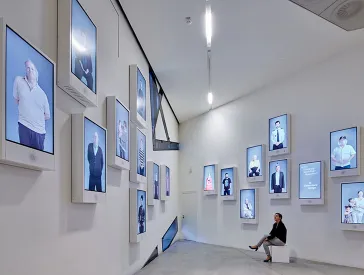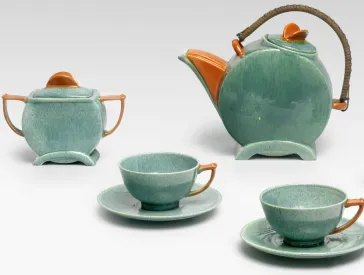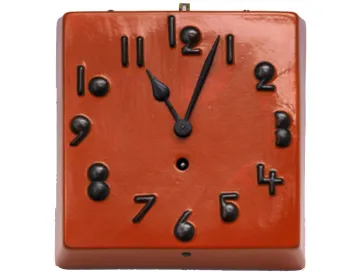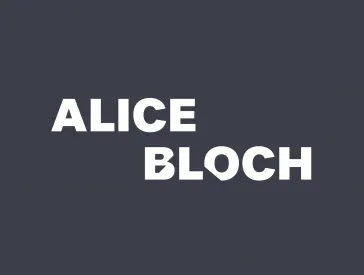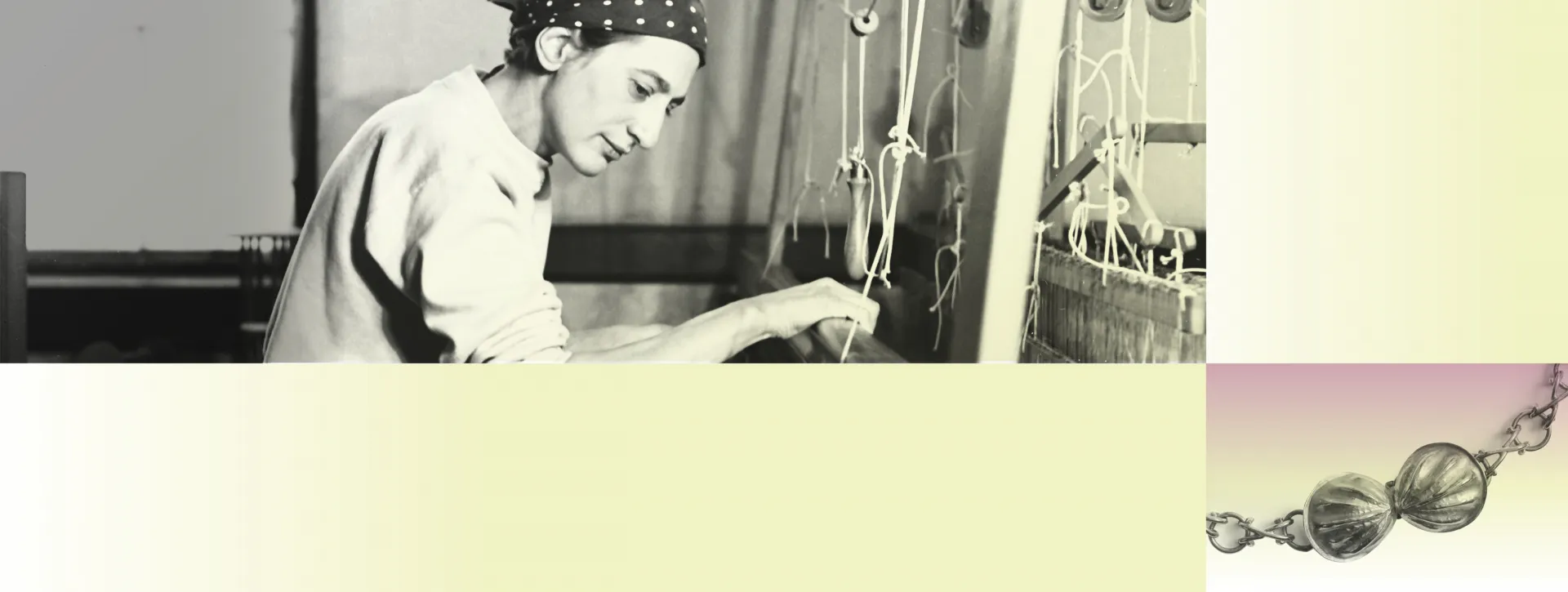
Defiance
Jewish Women and Design in the Modern Era at a Glance
Jewish women designers: They played a crucial role in the emancipation and modernisation of German society in the early twentieth century, yet many of them remain unknown to this day. This exhibition brings 62 such designers back into the spotlight. Click on the images below to learn more about their lives and work.
The portraits reflect the lives of the women. Studio images are shown alongside professional photos, family pictures alongside self-portraits by the artists. Some photographic images are razor sharp, while others are blurry. For some of the women, no portrait could be found.
The designers’ biographies are listed in alphabetical order:
-
Ahlfeld-Heymann, Marianne
1905–2003 -
Albers, Annie
1899–1994 -
Aronsohn, Paula
1908–1998 -
Baer-Freyer, Käte
1885–1988 -
Baruch, Franziska
1901–1989 -
Batzdorff, Lotte
1894–1957 -
Berli-Joel, Esther
1895–1972 -
Bloch, Alice
1913–2005 -
Brodsky, Nina
1892–1979 -
Bruck, Franziska
1866–1942 -
Bud, Charlotte
1899–1981 -
Cohen, Livia
1872–1957 -
Cohen-Silberschmidt, Elsbeth
1921–1993 -
Dehmel, Ida
1870–1942 -
Dessau-Goitein, Emma
1877–1968 -
Dicker, Friedl
1898–1944 -
Dodo
1907–1998 -
Edelstein, Grete
1882–1954 -
Eisner, Rose
1883–1940 -
Engel Hecker, Lotte
1888–1973 -
Frank, Elly
1877–1941 -
Freudenthal, Rosa
1870–1951 -
Friedländer, Elisabeth
1903–1984 -
Friedlaender, Marguerite
1896–1985 -
Friedlaender, Regina
1866–1932 -
Grossmann, Hedwig
1902–1998 -
Guermonprez Jalowetz, Trude
1910–1976 -
Heymann-Loebenstein, Margarete
1899–1990 -
Hirsch, Elli
1873–1943 -
Kuttner, Dorothea
1902–1967 -
Leon, Rose
1909–2010 -
Levy, Elisabet Alexandra
1910–1990 -
Litten, Hanna
1920–1942 -
Luiko, Maria
1904–1941 -
Marbach, Johanna
1872–1945 -
Meyerhof, Agnes
1856–1942 -
Nathan, Steffie
1895–1972 -
Neu, Trude
1912–2001 -
Neumann, Alice
1901–2008 -
Oppler-Legband, Else
1875–1965 -
Pritzel, Lotte
1887–1952 -
Rosenblüth, Annie
1890–1966 -
Roth, Emmy
1885–1942 -
Saltern, Irene
1911–2005 -
Samuel, Edith
1907–1964 -
Samuel, Eva
1904–1989 -
Sandler, Adele
1883–1946 -
Sandmann, Gertrude
1893–1981 -
Schlopsnies, Franziska
1884–1944 -
Schwarz, Paula
1872–1943 -
Seidmann-Freud, Tom
1892–1930 -
Sinasohn, Rahel Ruth
1891–1968 -
Spanier, Käte
1891–1970 -
Stern, Hanna E.
1885–1942 -
Straus, Paula
1894–1943 -
Szalit, Rahel
1888–1942 -
Szkolny, Lilli
1906–1942 -
Tomalin, Elisabeth
1912–2012 -
Trietsch, Emma
1876–1933 -
Turgel, Pia
1912–1988 -
Westheim, Jenny
1894–1934 -
Wolff, Käte
1882–1968
We have made every effort to identify all image rights and copyright holders. If we have not succeeded in doing so, please contact the Jewish Museum Berlin.
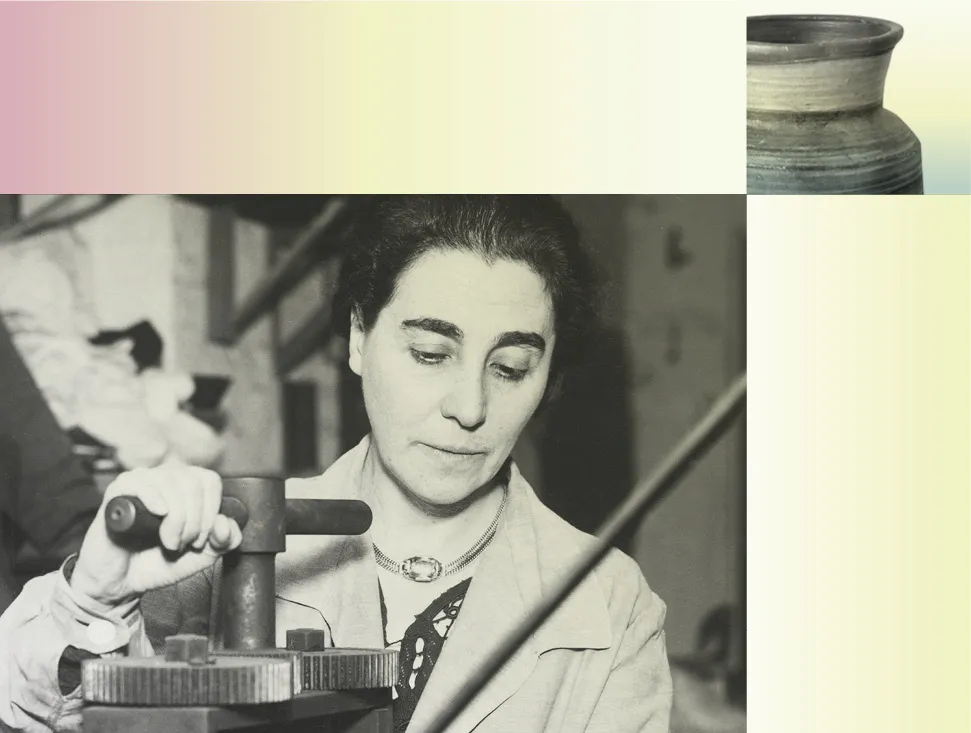
Defiance: Jewish Women and Design in the Modern Era
Exhibition Webpage
Defiance: Jewish Women and Design in the Modern Era (11 Jul to 23 Nov 2025): visual and audio resources relating to the exhibition and information in German Sign Language
Publications
Exhibition catalog: 2025, in German
Digital Content
- Current page: Jewish Women and Design in the Modern Era: All biographies at a glance
- Jewish Places: Important places where the Jewish designers lived and worked on our interactive map
- Do you know Eva Samuel?: How the research for the exhibition took off
- Small Puppets – Strong Women: community project accompanying the exhibition (in German)
- Objects from the exhibition in our collection online in German
See also
- Paper doll based on a costume design by Dodo (1907–1998): Create your own movable paper doll!
- Beaded bracelet based on a design by Emma Trietsch (1876–1933): Make your own beaded bracelet!
- Fashion paper doll based on designs by Irene Saltern (1911–2005): Dress your own fashion paper doll!
- Jewish Women Ceramists from Germany after 1933: Online feature on Google Arts & Culture, in German
